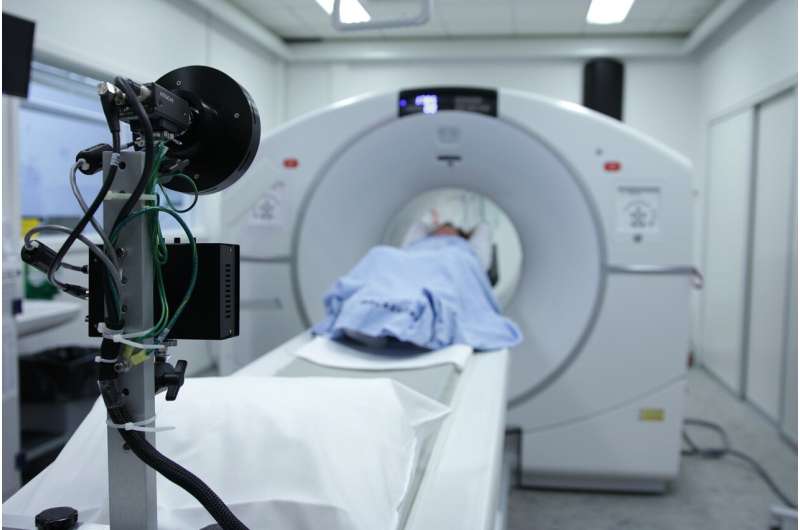This article has been reviewed according to Science X's editorial process and policies. Editors have highlighted the following attributes while ensuring the content's credibility:
fact-checked
trusted source
proofread
PET scans can offer faster, clearer images for diagnosing heart disease

When it comes to diagnostic imaging of your heart—such as MRI, CT, SPECT, PET—it can be overwhelming to know what kind of scan is right for you. What is your doctor looking for, and what exactly does the imaging show?
Imaging is vital in assessing and treating coronary artery disease (CAD), a condition in which plaque gradually builds up in the blood vessels. Over time, as the plaque accumulates, the blood vessels become narrower, reducing the blood supply to the heart muscle, which in turn could lead to symptoms such as chest pain or shortness of breath or a heart attack.
Risk factors for CAD are high cholesterol, high blood pressure, family history of heart disease, diabetes, smoking and obesity. It's important for cardiologists to have a clear image of the heart to determine the extent of the plaque buildup or whether the plaque is causing any blockage in order to develop an effective treatment and prevention protocol.
Traditionally, cardiologists have relied on a type of imaging called single photon emission computed tomography (SPECT) to diagnose coronary artery disease and the extent of blockage in your heart. This involves the injection of a radioactive tracer into the veins while a special camera picks up the traces of the tracer, photographing it as it moves through the heart. The photographs are assembled into a three-dimensional image, showing areas of tissue damage and reduced blood flow.
There is a new movement among cardiologists to use positron emission tomography, or PET scans, to assess coronary artery disease. Although the procedure for a PET scan is similar to SPECT—both involve photographing radioactive tracers as they move through the heart—PET scans are more accurate and have a better image quality than SPECT.
Other benefits of PET scan for cardiac imaging include:
- Overall scan time is shorter than for SPECT imaging, vital for patients who may find it difficult to be in the enclosed space of the imaging machine for a prolonged period
- Allows for the assessment of not just the blood flow, but how well the heart muscle itself pumps blood
- The ability to determine your coronary artery calcium score
- Can diagnose patients who continue to have chest pain despite no obvious blockage on cardiac catheterization or heart CT (microvascular disease)
- Lower dose of radiation, beneficial to patients who have to go undergo frequent imaging
- Image and assess patients who are suspected to have other conditions, such as cardiac sarcoidosis or endocarditis, scarring in the heart muscle or an infection from an implantable device such as a pacemaker.
Outside the scope of CAD, cardiac PET scans can image patients who have other suspected conditions including cardiac sarcoidosis or infections of implanted devices (pacemakers/defibrillators) or prosthetic heart valves.
While PET scans are not as widely available as SPECT, they give cardiologists a more complete picture of your heart's health, reducing the need for alternative imaging tests or unnecessary invasive procedures. If your local health care facility does not offer PET imaging, ask your cardiologist for a referral.





















